

The Eco-3D campaign has been supported by many people, including scientists, engineers, flight crew, students, professors and others. The biographies below are limited to members of the Ec0-3D Field and Aircraft Campaign 2011.
Charles Gatebe, Ph.D. Principal Investigator CAR 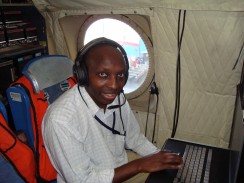
Dr. Gatebe works at Goddard Space Flight Center as a scientist and group lead with the Universities Space Research Association (USRA). He earned his Ph.D from the University of the Witwatersrand, South Africa in 1999. Currently he is interested in conducting elaborate experiments and developing new methods to define important surface and atmosphere radiative transfer functions, and improve remote sensing retrievals of aerosols, clouds and vegetation using laboratory, ground-based, airborne and satellite remote sensing. He’s also interested in conceiving and developing new instruments and technologies for making measurements in support of Earth science missions.
Miguel Román, Ph.D. Co-Investigator CAR
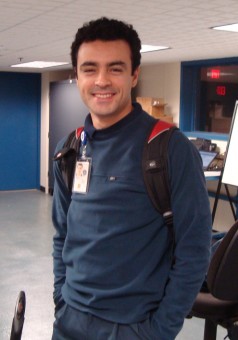
Dr. Roman is a Research Physical Scientist working at NASA Goddard Space Flight Center. During the northern flights, he will be supporting satellite validations/ground measurements and coordination.
David Harding Principal Investigor SIMPL
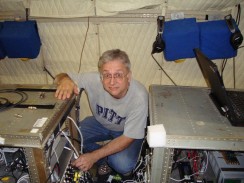
Dr. David Harding works as a Geophysicist in the Planetary Geodynamics Laboratory at NASA Goddard Spaceflight Center. He conducts research in the measurement and analysis of neotectonic landforms, vegetation canopies and continental water storage and discharge, in particular by utilizing advanced airborne and space-based laser altimeter systems. He is principal investigator for a NASA Instrument Incubator Program project, and is working to develop an airborne instrument, the Swath Imaging Multi-polarization Photon-Counting Lidar (SIMPL), will demonstrate techniques enabling more capable spaceflight laser altimeters for future Earth science and planetary exploration missions.
Rafael Rincon Principal Investigator DBSAR
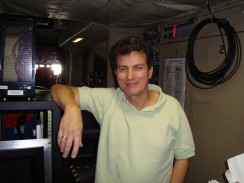
Rafael is a senior radar engineer at GSFC’s Microwave Instrument technology Branch. Dr. Rincon has been involved in the development of hardware and processing algorithms for the new generation of SAR systems. He is principle architect and systems engineer for the L-band Imaging Scatterometer and the Digital Beam Forming Synthetic Aperture Radar (DBSAR).
Lola Fatoyinbo Science Principal Investigator DBSAR

Dr. Fatoyinbo is an Environmental Scientist with a particular interest in 3D structure of forests. She received her PhD in Environmental Sciences at the University of Virginia in 2008 with a focus on mangrove forest ecology and remote sensing. She then started a NASA Postdoctoral Fellowship at the Caltech-Jet Propulsion laboratory in 2008 where she continued her research on the remote sensing of mangrove forests. In 2010 she moved back to the East Coast and began working as a research physical scientist at NASA GSFC. Lola is now involved in several science projects, including the DBSAR, the development of a new P-band radar called EcoSAR and the NASA Carbon Monitoring System biomass pilot.
Jon Ranson, Ph.D. Science Co-I DBSAR
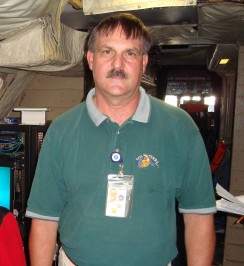
Dr. Ranson is an earth scientist specializing in radar and remote sensing. He uses these tools for studying vegetation type and amount (biomass) in ecosystem research. He serves as the Head of NASA’s Goddard Space Flight Center’s Biospheric Sciences Branch in Greenbelt, Maryland. Under his guidance, the Branch is advancing the use of satellite technology to study the carbon cycle and ecosystem science. Dr. Ranson is the Principal Investigator of a project to utilize various types of satellite data for mapping forest type and biomass along the tundra-forest interface in the Arctic and served as the Terra Project Scientist for five years.
Guoqing Sun, Ph.D. Science Co-Investigator DBSAR

Dr. Sun is a research professor in the Department of Geography and Earth Science System Interdisciplinary Center, University of Maryland, College Park and is also affiliated with NASA GSFC’s Biospheric Sciences Branch. He is an expert in satellite data processing and analysis, remote-sensing modeling, land-cover use change and Geographic Information Systems (GIS). His specialty is developing and using remote-sensing models for forest canopies and sensor data fusion (combining lidar, radar and passive optical sensors). Dr. Sun has contributed to several NASA projects dealing with land cover mapping in northeast China, as well as collaborated on NASA GSFC Siberian research projects, including a Shuttle Radar Topographic Mapping project in Siberia.
Engineering and Data Staff:
Kurt Rush Engineer CAR
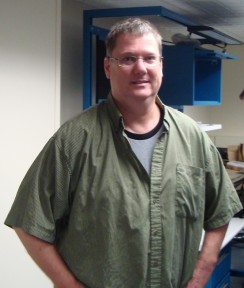
Kurt is an electrical engineer at NASA Goddard Space Flight Center in Greenbelt, Maryland. In addition to supporting CAR, he developed a key part of the SIMPL electronics and helped solve problems on the installation of the equipment aboard the P3.
Susan Valette Software Engineer SIMPL and DBSAR
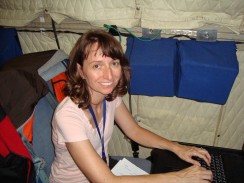
Susan is a Computer Engineer at the NASA Goddard Space Flight Center, working in the Science Data Processing Branch. Since 2003 she has worked on various software components of Laser and Radar systems, including data systems, graphical user interfaces, instrument commanding and science data processing. Her current work includes the development of the 16 channel LIST airborne instrument data system, the maintenance of the Slope Imaging Multi-polarization Photo-Counting LIDAR (SIMPL) data system, the development of science products for SIMPL, the processing of SIMPL’s science data, and the enhancement of the Dual Band Synthetic Radar (DBSAR) Graphical User Interface, as well as supporting the integration testing of this instrument. She earned her B.S. from the University of Maryland, College Park.
Martin Perrine Instrument Engineer DBSAR

Martin is a senior radar engineer at NASA Goddard Space Flight Center in Greenbelt, Maryland, supporting radar and communication system and architecture development. Prior to joining NASA he worked on the regulation of radio systems for the Federal Communication Commission and developed radios systems for the Department of Defense. He received a B.S.E.E. from Michigan State University in 1984 and an M.S.E.E from Johns Hopkins University in 1987.
Quenton Bonds, Ph.D Instrument Engineer DBSAR

Dr. Bonds was born and raised in Montgomery Alabama. He received the B.S. degree in Mathematics from Alabama State University in Montgomery Alabama in 2001 and the M.S. degree in Electrical Engineering in 2006 from The University of South Florida (USF) in Tampa Florida and went on to attain the Ph.D. from USF in 2010. Dr. Bonds is currently a research electronics engineer in the Microwave Instruments and Technology Branch of the National Aeronautics and Space Administration (NASA) at the Goddard Space Flight Center (GSFC) in Greenbelt Maryland. Of his most notable achievements, Mr. Bonds was the recipient of the 2010 IEEE WAMICONN Best Student Poster Award, 2009 FEF Carl Crawford Award, 2009 IEEE MTTS Fellowship for Medical Applications, 2008 USF College of Engineering Best Poster Award just to name a few.
John Barrick Fight Data Technician
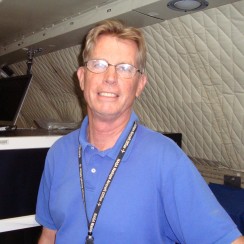
John works at Langley Research Center. His job on this mission is to provide data about the plane’s location and the outside atmospheric condition, and take down-looking video of ground as the airplane passes over. This video is time and date stamped, so it can be correlated with the data.
Rajesh Poudyal Data Analyst CAR
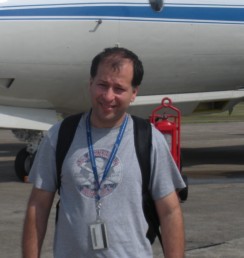
Rajesh works as Senior Programmer Analyst with the Sciences and Exploration Directorate at NASA Goddard Space Flight Center in Greenbelt, Maryland.
Phil Dabney Instrument Engineer SIMPL
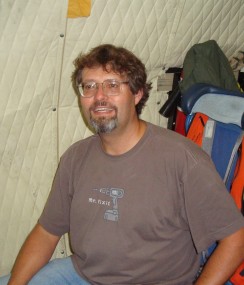
Phil works in the Laser Remote Sensing Laboratory at NASA Goddard Space Flight Center, Greenbelt, Maryland.
Brantley Riley System Administrator DBSAR
Brantley is the primary computer system administrator that supports the DBSAR Linux boxes. She works on-base at GSFC and has supported Eco 3D in many ways. During the flights, she providing support via telephone and email and working closely with the DBSAR team with the instrument problems. She has been a system administrator (primarly Unix) at GSFC since 1997, first on the Hubble Space Telescope project and for the past 3 years as part of the team that supports AETD’s Software Engineering Division.
Field Crew, Howland, Maine
Wenjian Ni, Ph.D.

Dr. Ni works as an assistant research professor in Geography at the University of Maryland, College Park. His research interests include measuring and modeling the radar backscatter of vegetated surfaces, the description of 3D forest structure using terrestrial/airborne/spaceborne laser scanners, and algorithm exploration for the mapping of forests for aboveground biomass at a regional scale.
Wenli Huang
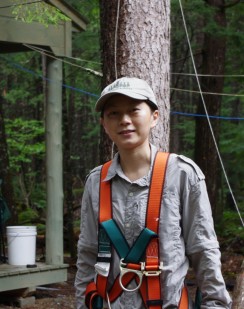
Wenli is a Ph.D. student from the University of Maryland, College Park majoring in Geography. Her research interests are data fusion of airborne lidar and radar for the mapping of biomass. The goal is to monitor and evaluate management effects on forest structure and the carbon cycle with ground measurements and remote sensing. Before coming to the United States, she earned her M.S. in Cartography and Geographic Information System from Beijing Normal University in 2006, and her B.S. in Cartography from Wuhan University in 2002.
Feng Zhao
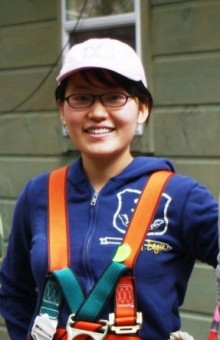
Feng is a third year graduate student in the department of Geography at the University of Maryland, College Park. Her current work project is on North American Forest Dynamic (NAFD) and forest disturbance via satellite images. She earned her B.S. from Beijing Forestry University majoring in water and soil conservation in 2009.
Paul Montesano
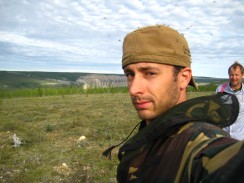
Paul is a researcher working in the Biospheric Sciences branch at NASA Goddard Space Flight Center and a Ph.D. student in the Department of Geography at the University of Maryland College Park. He is interested in the combined application of active and passive remote sensing systems for mapping vegetation structure in ecological transition zones.
Flight Crew (no photos available)
Robert Harpold Navigation Rack Operator
Mike Singer Chief Pilot/Program Manager
Rich Rogers Aircraft Operations Manager
Bill McGrory Avionics Technician
Bryan Yates Flight Engineer/Mechanic
Pete Peyton Avionics Technician
John Doyle P3 Flight Engineer
Martin Nowicki Flight Mission Manager
Writer
Dr. Joanne Howl received her D.V.M from the University of Tennessee College of Veterinary Medicine, Knoxville, Tennessee in 1987. She has practiced clinical veterinary medicine, worked in veterinary emergency response and is a writer and editor in the pet health and science fields. Currently she is employed as a Technical Writer for Sigma Space. This is her fifth year blogging for the Earth Observatory in support of NASA field campaigns.
Maryland, 8:45 p.m.
From Rafael Rincon:
I’m back in Maryland, and calling in as we drive from Wallops, Virginia to Goddard in Maryland. It’s been a very long day, but rewarding. We’ve gathered a lot of data and learned more about our instruments, so we have to say this leg of the mission was exhausting – but successful.
We arrived this afternoon at Wallops after flying almost 8 hours today. We started early in the morning, and were able to fly over Bartlett Forest in New Hampshire. Then we returned to the Bangor area and took one more pass over the Howland site. Finally we flew to Quebec and spent a few hours acquiring data over the boreal forest site.
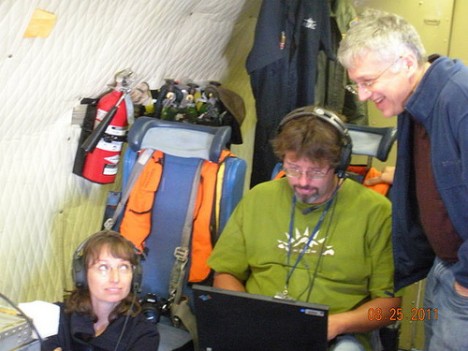
Today was really good for SIMPL. We finally had permission to turn the lidar on over Quebec, and so they had a very successful flight there. The flight was very good for lidar in New Hampshire, too. The areas we wanted to fly were available, and the lidar was very happy with the low altitude restrictions. So it was a great day for SIMPL – and that means it was a very good day for the Eco-3D mission, as well.
The radar, DBSAR, had challenges again today. First of all, we did fly it over New Hampshire and the data we gathered there looked pretty good. But we had to stay out of restricted airspace, which means that we had to fly below 9,000 feet. The radar really prefers to fly high, but we couldn’t do that. Now, we knew about this restriction and we’d planned to take low measurements with DBSAR here, so it’s no problem – it lets us learn more about how this particular instrument handles lower altitude. It just would have been nice to be able to fly higher as well.
The other issue is that we started to see some problems again with the RAID, so that issue has not been entirely solved yet. It appears that the computer stops saving the data for small intervals, and that really impacts the data collection. We do get data, but it makes it very hard and we may miss some data. Despite the RAID hiccups, we were able to gather radar data for New Hampshire and for Quebec, so this mission has been successful.
I want to add that part of the challenge with this field campaign is flying and understanding the aircraft. Our radar system has been fully tested in the lab. Before going to the campaign, we go through strict procedures to ensure that the instrument meets the engineering and science requirements. This includes lots of lab testing and anechoic measurements.
When we fly on the P3 aircraft, we are not in the lab environment anymore and anything can happen. We are currently dealing with vibration issues that seem to be affecting our computer data system. We flew DBSAR in 2008 for flight tests and did not experience these problems. This time around there are new things, like new aircraft racks, new mounts, new radar hardware and modes, etc. These might be causing some problems. We are working hard to identify and solve these issues.
For now, we plan to relocate the instrument rack to an area in the plane with less vibration. We are also thinking about beefing up the equipment mounts and RAID configuration. We’ll be airborne soon again.

We returned to Wallops late this afternoon, around 5 p.m. today. I wanted to get some pictures of the crew, so that we could recognize everyone that has worked so hard for us this time. Unfortunately when I got out of the plane, everyone was already gone. Everyone was in a hurry to get home after a long few days in the air.
The plan from here? Well, there won’t be a lot of rest. I am going to go to my office and trouble shoot the computer tomorrow, to get it ready for next week. So I am bringing the computer and the processor home with me.
Our current plan is to fly to fly to Florida next week and collect data over mangrove forests. There are other sites we’d like to look at, such a forest in North Carolina. But a lot depends on the weather, the availability of the airplane and the instrument health. Right now, with Hurricane Katia in the Atlantic and a tropical storm brewing in the Gulf of Mexico, weather seems to be the biggest question of all. I’m sure we’ll fly somewhere – either the southern route or locally in Maryland. But at this point, I don’t think we can be sure exactly what will work the best. We’ll meet tomorrow to evaluate the variables, and make a decision from there.
I do know my immediate plan. I have not gotten much sleep on this trip. I’ve been up until one or two in the morning, then wake up somewhere around five in the morning in order to board the aircraft. Then there is not a lot of down time on the flight – we are really hustling most of each day. I’m pretty tired, so when I get home I am planning on getting some good sleep.
Before I turn in for the evening, though, I want to mention all of this work is possible due to the great work of many people. In particular, for DBSAR – the instrument I work with – I want to recognize the efforts of Marin Perrine, Susan Vallet, Quenton Bonds, Brantley Ripley, John Bichell and the Wallops aircraft office, who have gone way beyond their duties to make this campaign possible.
___________________________________
It’s Jon Ranson back here, for a moment. I’ve been at Goddard this week, supporting the mission from the office. I have a thought that I wanted to share here, for our readers.
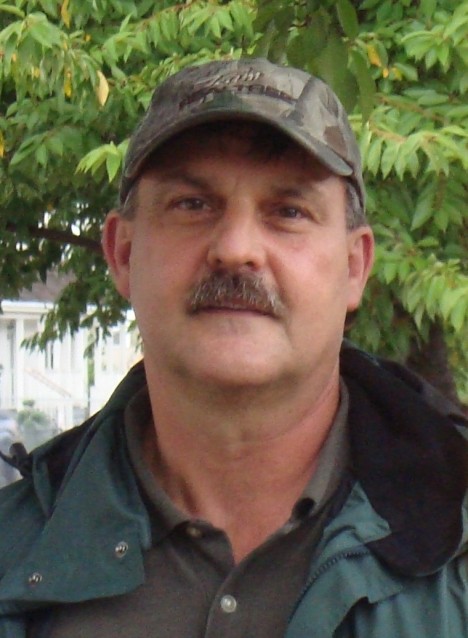
To someone who isn’t familiar with how these science missions work, it might look like we’re not doing very well here, with all the trouble with weather and with the instrument issues. But from where I stand, this mission looks quite successful. We are meeting challenges – some unexpected, like the weather. And some not unexpected – like issues cropping up with the instruments. We are learning a tremendous amount about the very new DBSAR instrument and we are collecting really good and valuable science data, too. I call this a success.
The DBSAR was first flown in 2008 and then it only had one polarization at that time. Those flights told us that the instrument worked well and held promise for three dimensional forest measurements. Since then, the instrument has been improved and we are trying new things with it. Since 2008, Rafael and his very talented team have added to the channels from which we can acquire data. Now it is what we call “fully polarimetric”. There are four polarizations, or channels now, rather than one, for data collection. So it is acquiring a lot more data now.
The DBSAR has not been tested in this mode in the air before, so this flight campaign is as much about finding out the limits and performance capabilities of this very new radar design as it is gathering data. It is no surprise to me that our testing has pushed DBSAR hard, and challenged its capabilities. That frustrates us, when problems crop up, because we’d love for our instruments – even experimental ones – to work perfectly first time out. But it’s not at all unexpected and not a failure of our instrument or design. Pushing the DBSAR to its capabilities lets us know where we need improvement, and allows us to make it more robust. It is working well – but it is also showing us where it needs improvement. This is a very good, and successful, test of a new instrument.
Despite all the challenges, we are getting extremely good data from all instruments, including the DBSAR. I think we are all pleased with our results.
This is how we learn. This is how we get better. This is, truly, science in action.